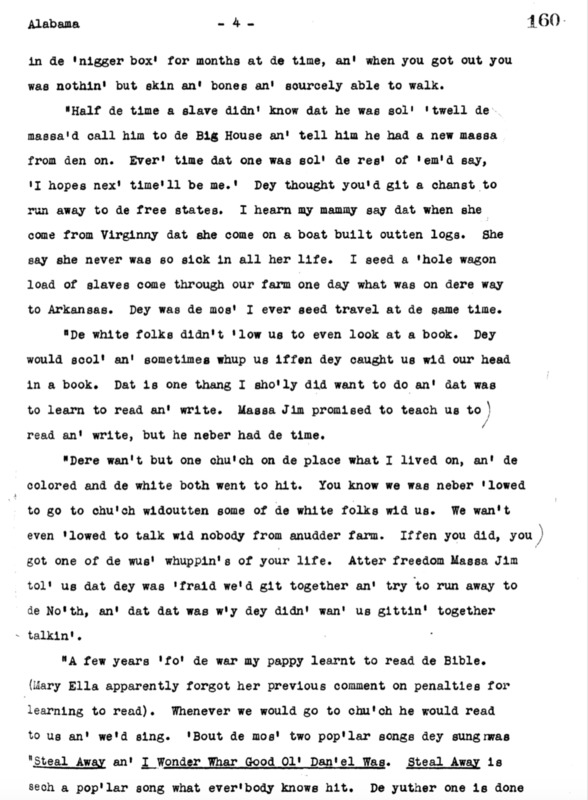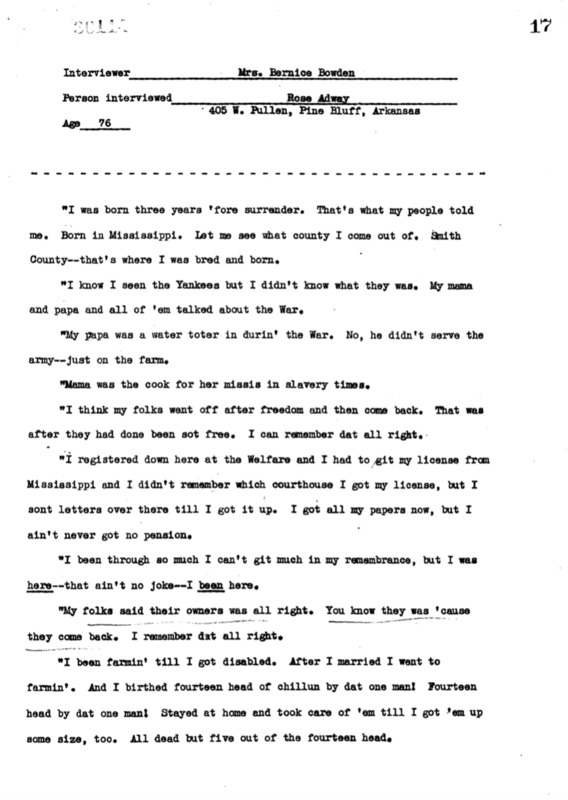Racialized Violence and Resistance
In the experiences recorded in this collection, much information is revealed about how previously enslaved individuals understood and coped with the institutionalized and racialised violence perpetrated against them. There are examples of systemic violence experienced by enslaved and freed individuals post-emancipation. As well, there is much information about how individuals resist these systems, like through direct confrontation or opposition or through participation in cultural products such as songs and community, which is an important expression of agency in an oppressive system.


